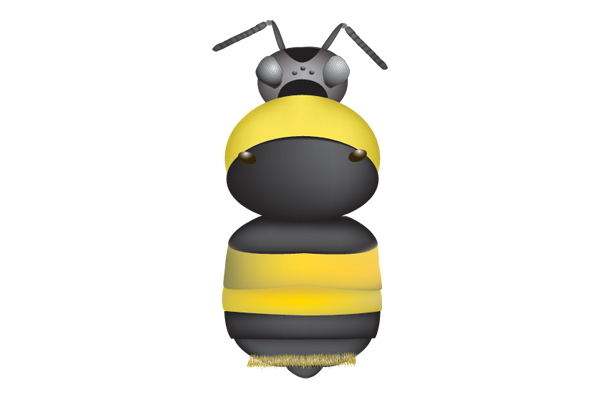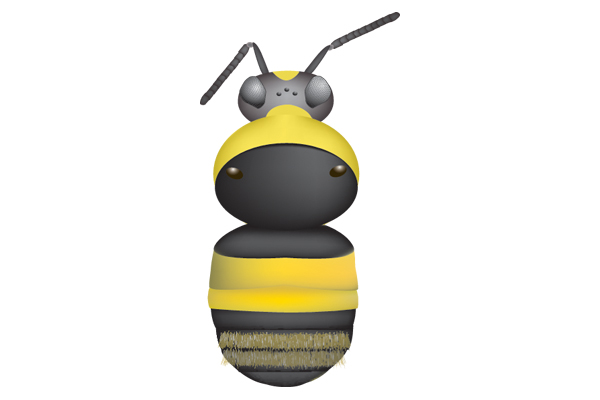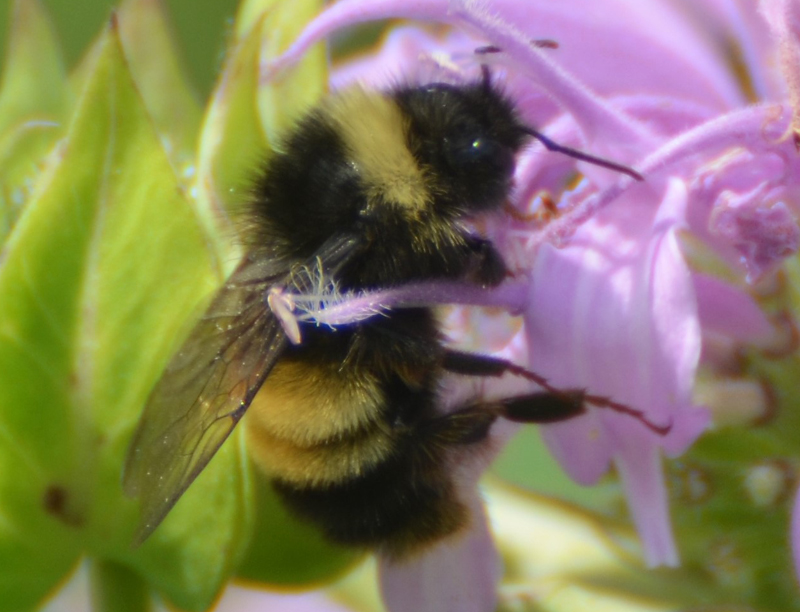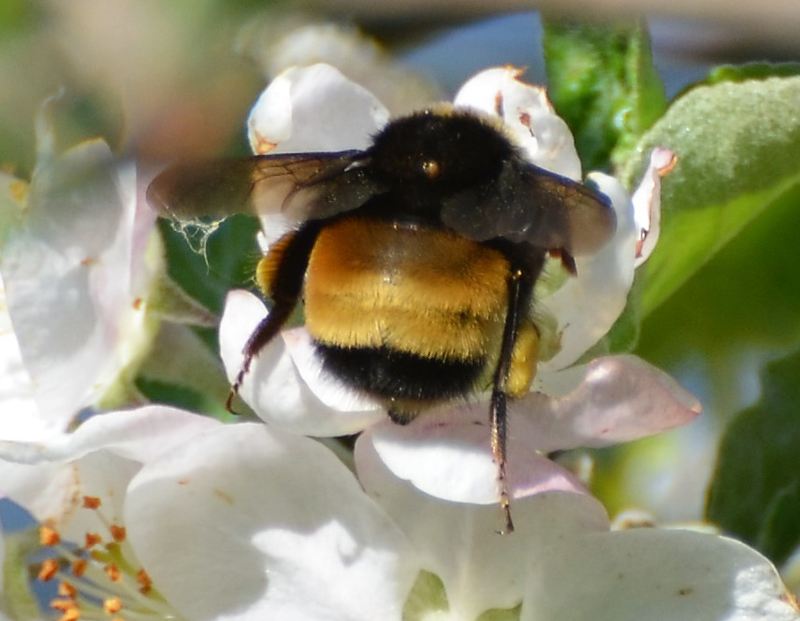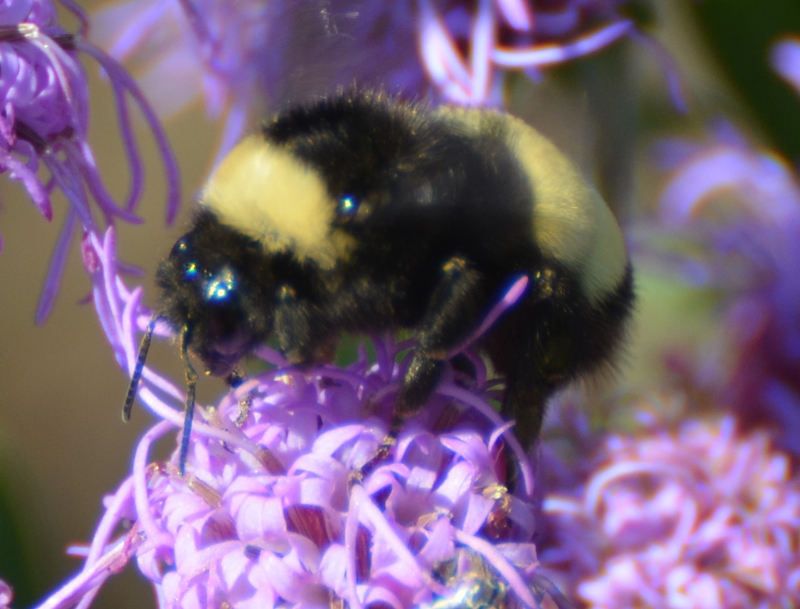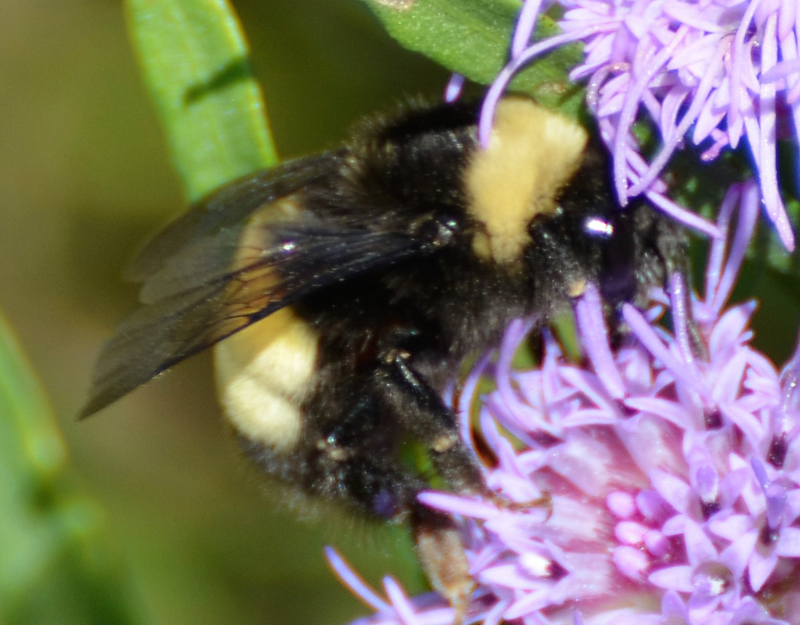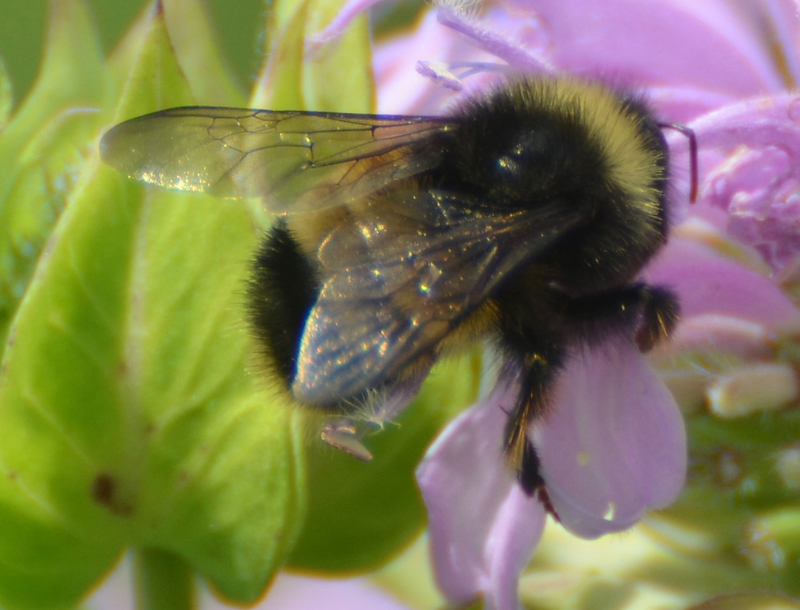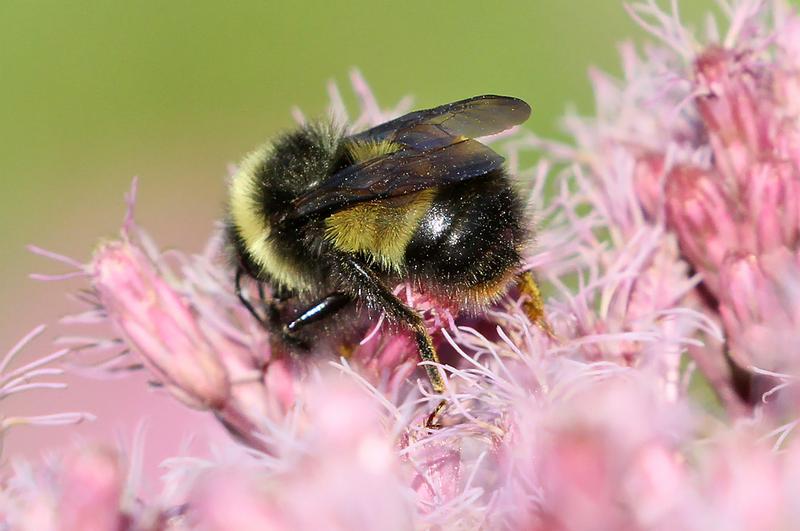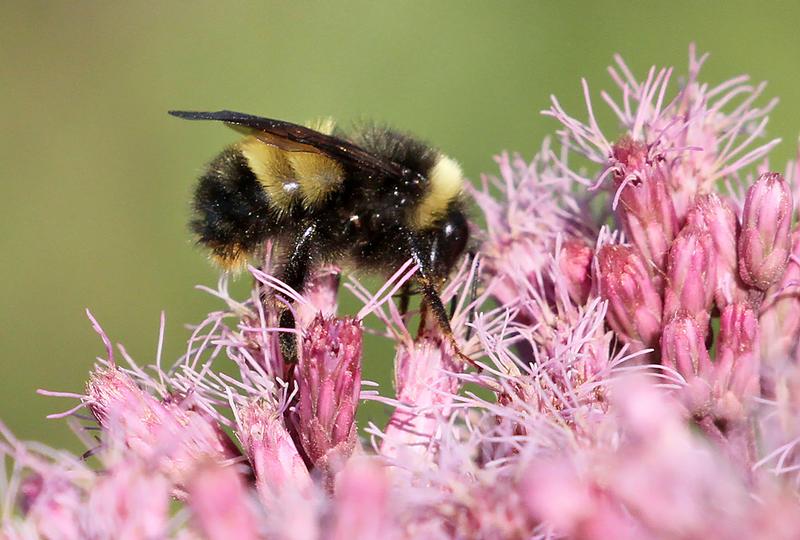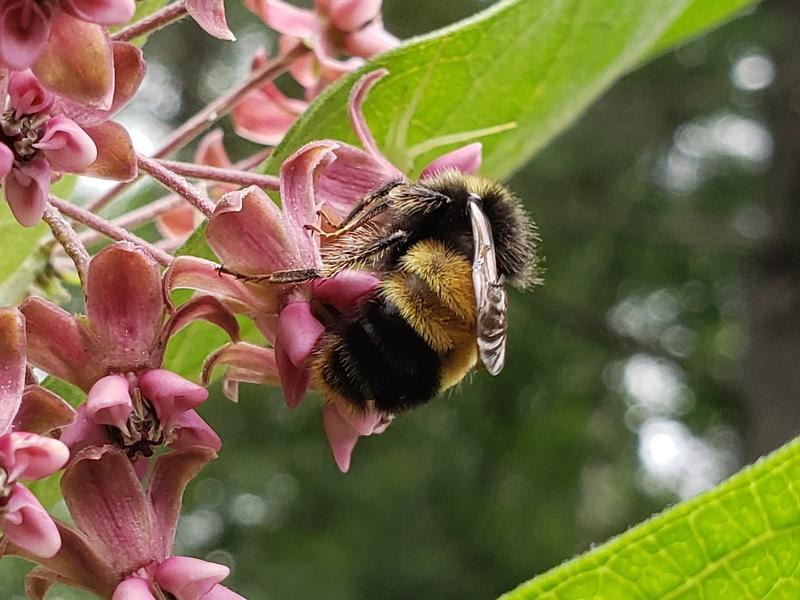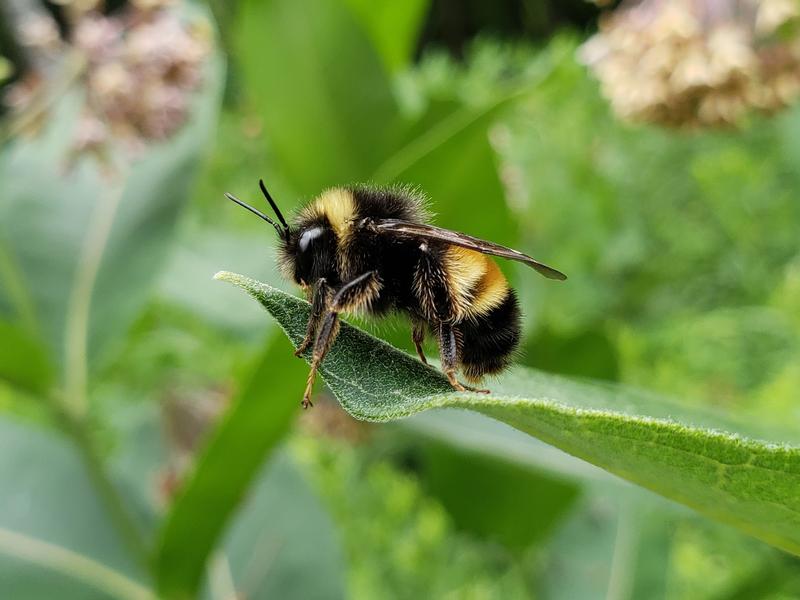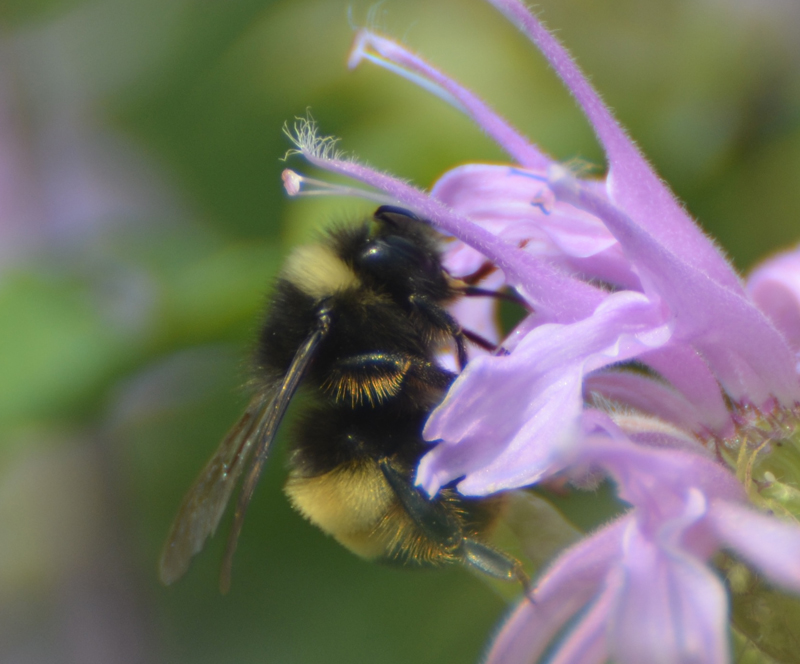
Status-Global/State:
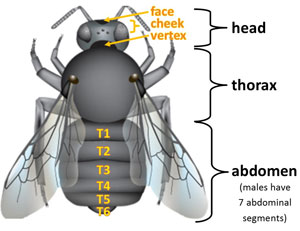
Identification:
- Worker – Face and vertex black, sometimes intermixed with short pale hairs. Thorax with a black band or patch that extends past the wingpads and sometimes down to the abdomen; the patch size is variable but always with yellow in front of the wingpads. Abdominal segment T1 is black, T2-3 is yellow, and T4-6 is black. Some morphs have yellow hair or fringe on T5.
- Queen/gyne – Similar to workers. Some morphs have yellow hair or fringe on T5. Queens/gynes are larger than workers and appear earlier in the season.
- Male – Face and vertex intermixed. Thorax with a black band or patch that extends past the wingpads and sometimes down to the abdomen; the patch size is variable but always with yellow in front of the wingpads. Abdominal segment T1 is black, T2-3 are yellow, and T4-6 is black, T7 intermixed. Some morphs have a fringe of yellow on T6-7, and some have intermixed hairs on T4 and orange/red on T6-7 and on their legs.
- Other distinguishing features – Short round face. Females have short and even hair, while males have long and shaggy hair.
Similar Wisconsin Species:
Similar bumble bee species in Wisconsin are the American bumble bee (B. pensylvanicus) and black and gold bumble bee (B. auricomus) (Colla et al. 2011, Williams et al. 2014).
Description of Habitat/Range:
Known habitats include wooded and wetland areas (Williams et al. 2014). Nests have been found mostly underground (Colla et al. 2011, Williams et al. 2014).
Nectar Plants
The yellowbanded bumble bee is a short-tongued species (Williams et al. 2014). Nectar plants include Asters, Crocus, Eupatorium (Joe-pye weed), Lonicera (honeysuckles), Melilotus (sweet clovers), Monarda (bee balms), Ribes (gooseberry/currants), Rosa (Roses), Rubus (blackberry), Salix (Willows), Solidago (goldenrods), Spirea (meadowsweet), Taraxacum (dandelion), Vaccinium (blueberry), and Vicia (vetches) (Williams et al. 2014, Colla et al. 2011).
Data from verified B3 observations [updated 2/28/2024].
Flight Season:
In Wisconsin, observation records have mostly been made between May and September. Range-wide, queens start emerging in April and enter diapause by September (Colla et al. 2011).
Literature Cited:
Colla, S., Richardson, L. and Williams, P. (2011) Bumble Bees of the Eastern United States. A product of the USDA Forest Service and the Pollinator Partnership with funding from the National Fish and Wildlife Foundation.
Hatfield, R., Jepsen, S., Thorp, R., Richardson, L. & Colla, S. 2015. Bombus terricola. The IUCN Red List of Threatened Species 2015: e.T44937505A46440206.
Williams, P.H., Thorp, R.W., Richardson, L.L. and Colla, S.R. (2014) The Bumble bees of North America: An Identification guide. Princeton University Press, Princeton.
